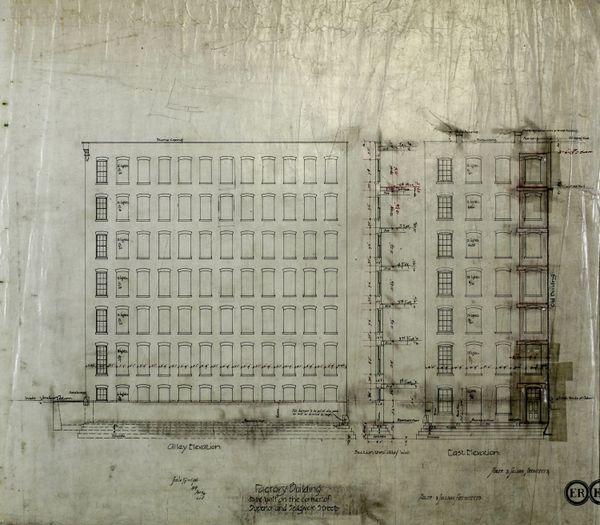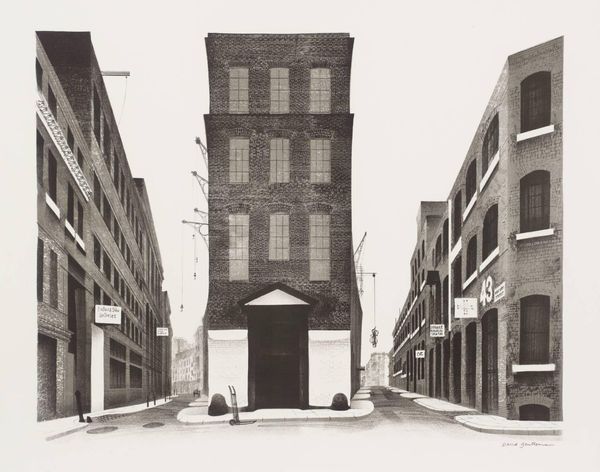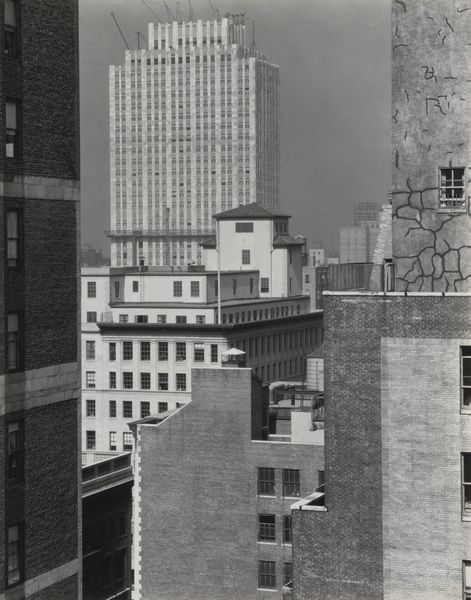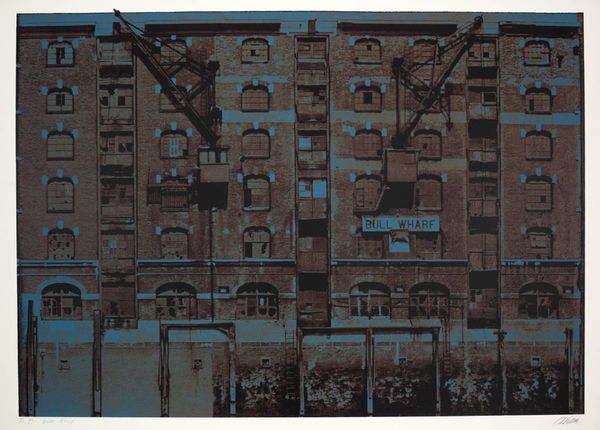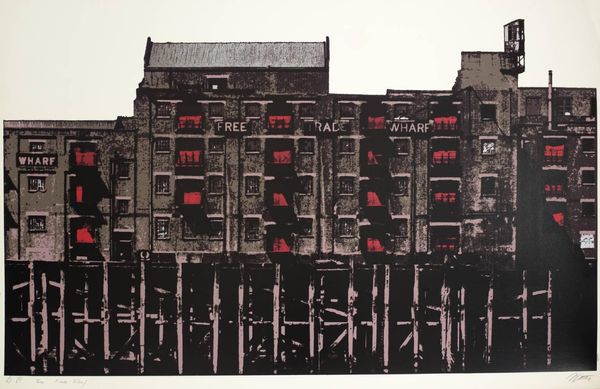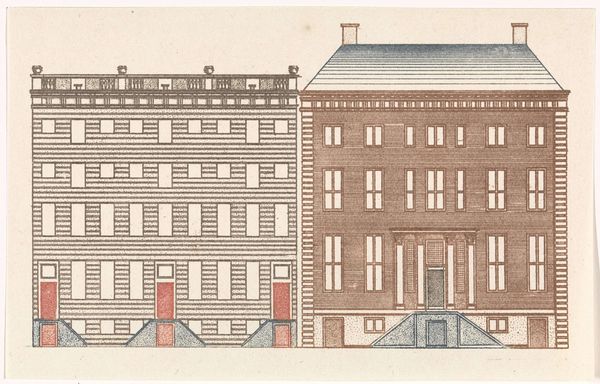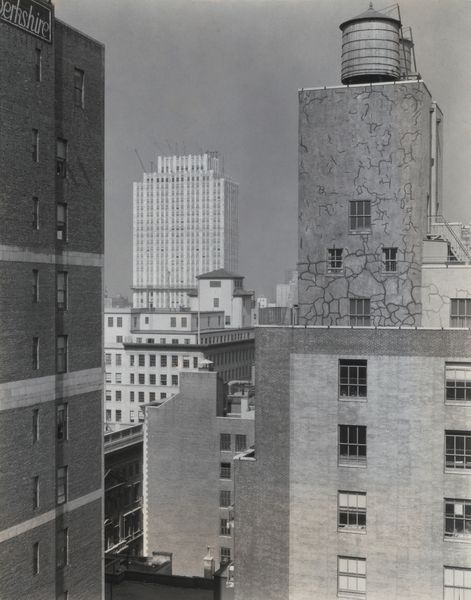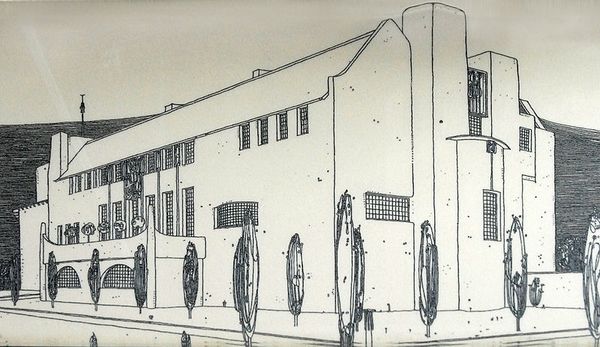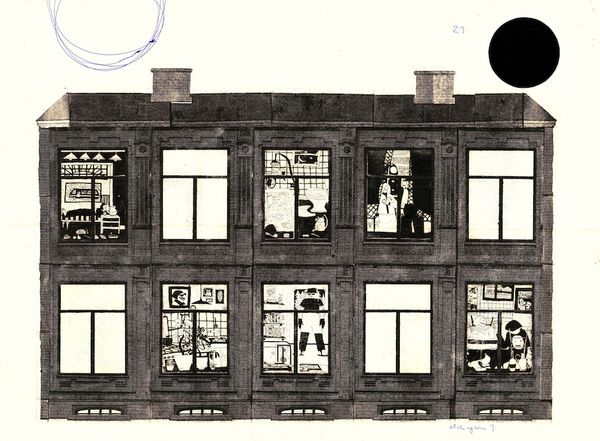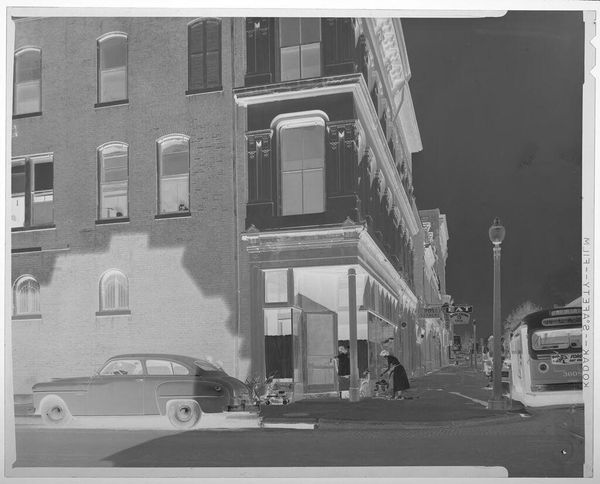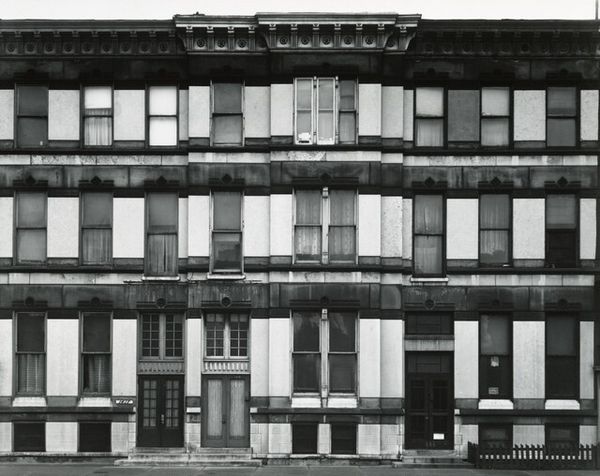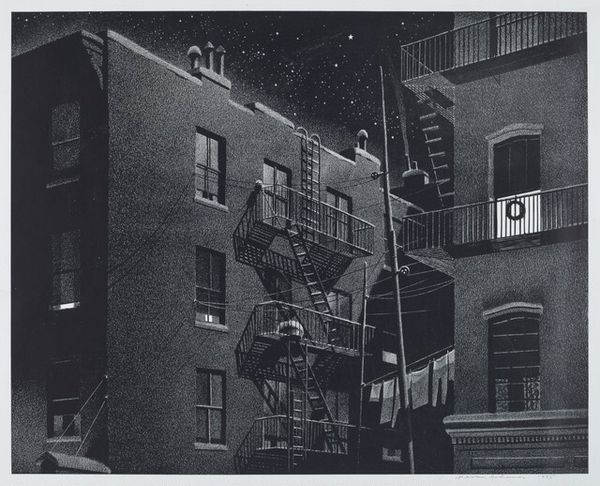
drawing, paper, ink
#
art-deco
#
drawing
#
soviet-nonconformist-art
#
paper
#
ink
#
architectural drawing
#
cityscape
Copyright: Public domain
Curator: This is a drawing from 1932, "Decoration Sketch for the play 'Joy Street'", by Petre Otskheli. It's crafted with ink on paper, presenting what looks like a rather somber city scene. Editor: Somber is right. There's a starkness to the architectural drawing, a kind of alienated feeling I get immediately. All those repetitive windows… it almost feels oppressive. Curator: Otskheli was working during the Soviet era in Georgia. This piece is categorized within the Soviet Nonconformist Art movement. He was designing theater sets. It’s fascinating how stage design became an avenue for subtle resistance and commentary, reflecting a sense of disillusionment within the restrictions imposed. Editor: Exactly. Looking at this from an intersectional perspective, we can think about how urban spaces, especially within totalitarian regimes, impacted individual identities and creativity. That stark facade becomes symbolic. Also the street lamps hanging heavily… what's on 'Joy Street' doesn't look particularly joyful, does it? Curator: The title is deeply ironic considering the artistic climate. The scene presents an austere view of modernity, playing perhaps with notions of public façade versus private reality, and mirroring anxieties related to societal control. The art deco influences, while present, feel deliberately subdued. Editor: Subdued, yes, like joy is being rationed. Even the placement of that ‘Bar’ sign; its stylization almost mocks the idea of a carefree night out. This era saw many grappling with disillusionment after failed promises. Artists, often at the forefront of challenging such orthodoxies, used what was accessible - even something as apparently benign as stage design – as a form of cultural activism. Curator: Ultimately, the sketch gives us access into not just an artistic idea for theater, but how that stage might serve as commentary. Editor: Precisely, the deceptive simplicity of the piece allows us a complex discourse on the lived experience of that time. Curator: Yes. And the artist can engage in it indirectly.
Comments
No comments
Be the first to comment and join the conversation on the ultimate creative platform.
